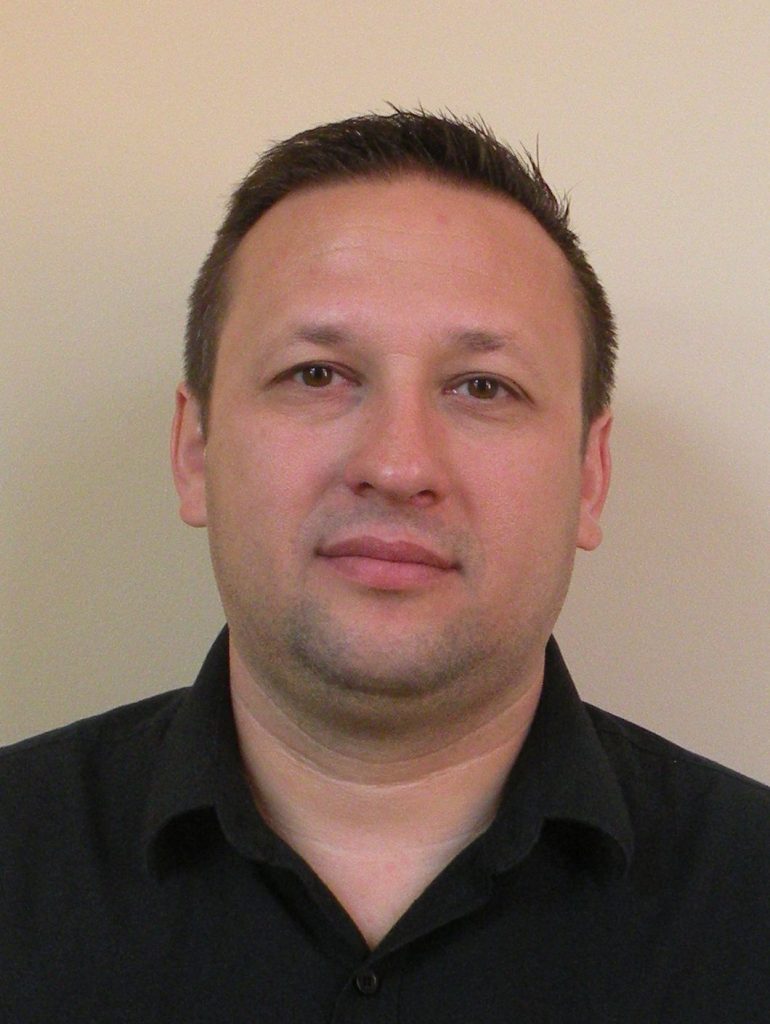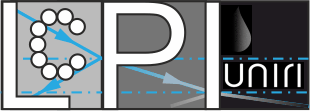Istvan Szilagyi, MTA-SZTE Momentum Biocolloids Research Group, University of Szeged, Hungary
email: szistvan@chem.u-szeged.hu & web: http://www2.sci.u-szeged.hu/physchem/bioc/

Oxidative stress induced by reactive oxygen species (ROS) is responsible for the development of various
diseases including chronic inflammation and cancer as well as for loss in product quality in industrial
manufacturing procedures. Antioxidant enzymes such as superoxide dismutase, horseradish peroxidase and catalase are the primary defense systems against ROS, however, their supplementation to living organisms or their use as antioxidant agent in industrial processes is limited due to their high sensitivity to the environmental conditions like pH, ionic strength, and temperature. Our group proposes two approaches to tackle this enzyme sensitivity challenge.
First, immobilization of antioxidant enzymes on appropriate particle substrates has proven as a promising
tool to obtain composites of sufficient antioxidant activity and functional stability. We confined enzymes
in nanoparticle-based (e.g., halloysite nanotubes and titania or layered double hydroxide nanosheets)
composites involving natural or synthetic polyelectrolytes to improve structural and colloidal stability [1-
4]. The obtained hybrid materials proved as efficient antioxidant agents in reduction of oxidative stress in
living cells. Besides, enzyme mimicking metal complexes of similar function as the active center of native
enzymes were also applied to enhance the durability of the antioxidant nanocomposites [5-7].
Second, nanozymes, i.e., nanomaterials of enzyme like activities, attract widespread contemporary
interest to replace the costly and hardly manageable native enzymes. However, their formulation is desired to achieve sufficient functional, structural, and colloidal stability. Prussian blue [8], manganese oxide [9] and ceria [10] nanoparticles were synthesized, functionalized with polyelectrolytes and heteroaggregated with latex particles to obtain processable hybrid materials of broad-spectrum ROS scavenging activity. In addition, such a nanozyme attachment to latex support led to excellent heat tolerance and resistance against salt-induced aggregation. Further plans in this area include development of nanozyme composites of multienzymatic activities.
References
[1] A. Szerlauth, Á. Varga, T. Madácsy, D. Sebők, S. Bashiri, M. Skwarczynski, I. Toth, J. Maléth, I.
Szilagyi, ACS Mater. Lett. 5 (2023) 565-573.
[2] S. Sáringer, T. Valtner, Á. Varga, J. Maléth, I. Szilagyi, J. Mat. Chem. B 10 (2022) 2523-2533.
[3] S. Saringer, P. Rouster, I. Szilagyi, J. Colloid Interface Sci. 590 (2021) 28-37.
[4] M. Pavlovic, S. Murath, X. Katona, N.B. Alsharif, P. Rouster, J. Maleth, I. Szilagyi, Sci. Rep. 11
(2021) 4321.
[5] Z. Somosi, N.V. May, D. Sebok, I. Palinko, I. Szilagyi, Dalton Trans. 50 (2021) 2426-2435.
[6] M. Pavlovic, M. Nafradi, P. Rouster, S. Murath, I. Szilagyi, J. Colloid Interface Sci. 543 (2019)
174-182.
[7] B. Katana, N.V. Nagy, G. Varga, I. Szilagyi, J. Mol. Struct. 1256 (2022) 132492.
[8] N.B. Alsharif, G.F. Samu, S. Sáringer, S. Muráth, I. Szilagyi, J. Mol. Liq. 309 (2020) 113066.
[9] N.B. Alsharif, K. Bere, S. Sáringer, G.F. Samu, D. Takács, V. Hornok, I. Szilagyi, J. Mat. Chem.
B 9 (2021) 4929-4940.
[10] N.B. Alsharif, G.F. Samu, S. Saringer, A. Szerlauth, D. Takacs, V. Hornok, I. Dékány, I. Szilagyi,
Colloid Surf. B 216 (2022) 112531

